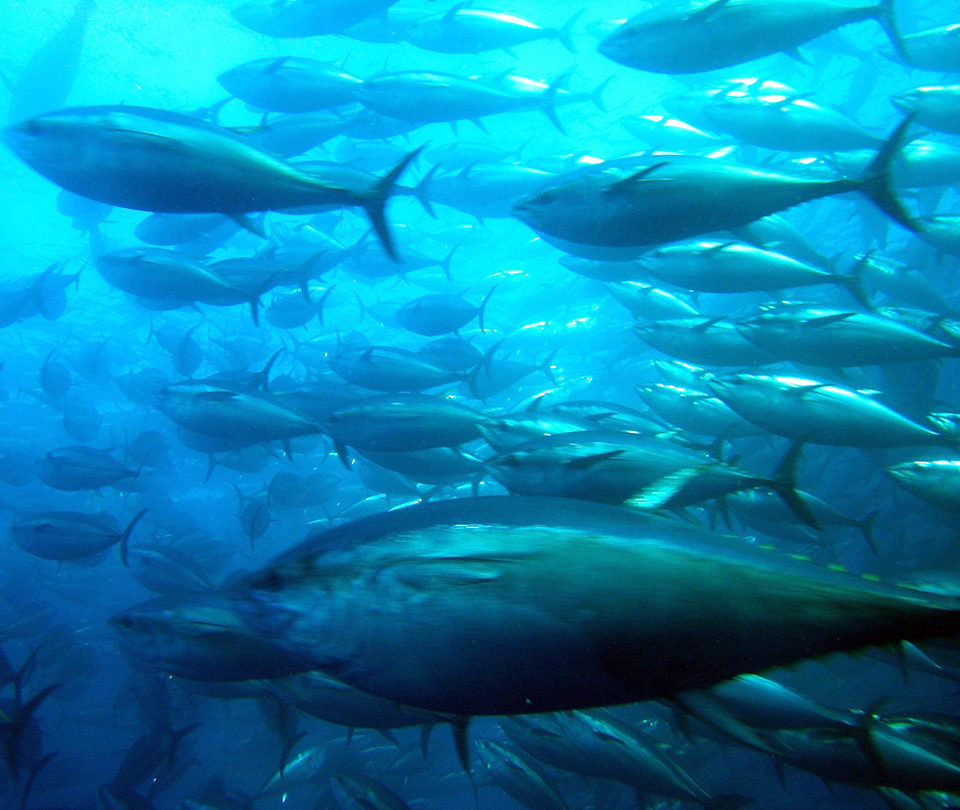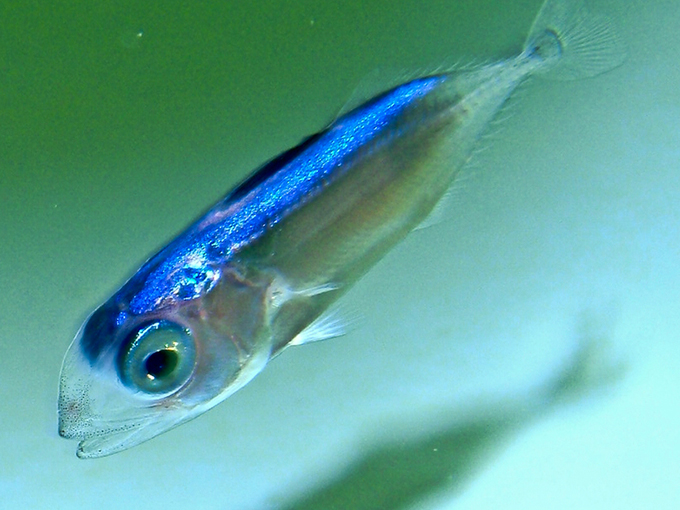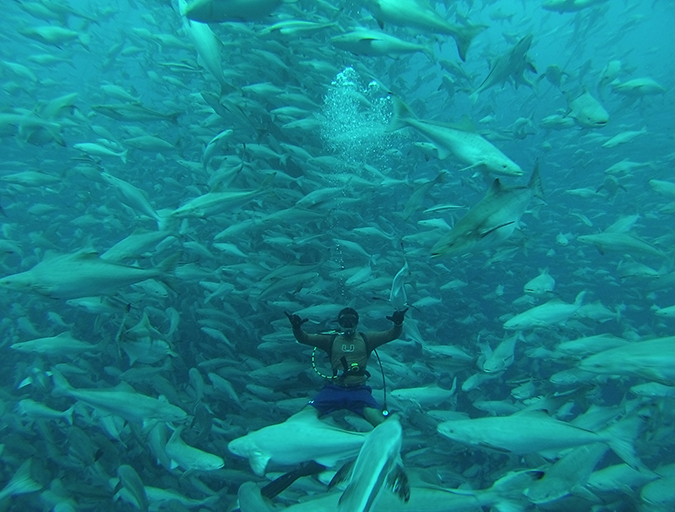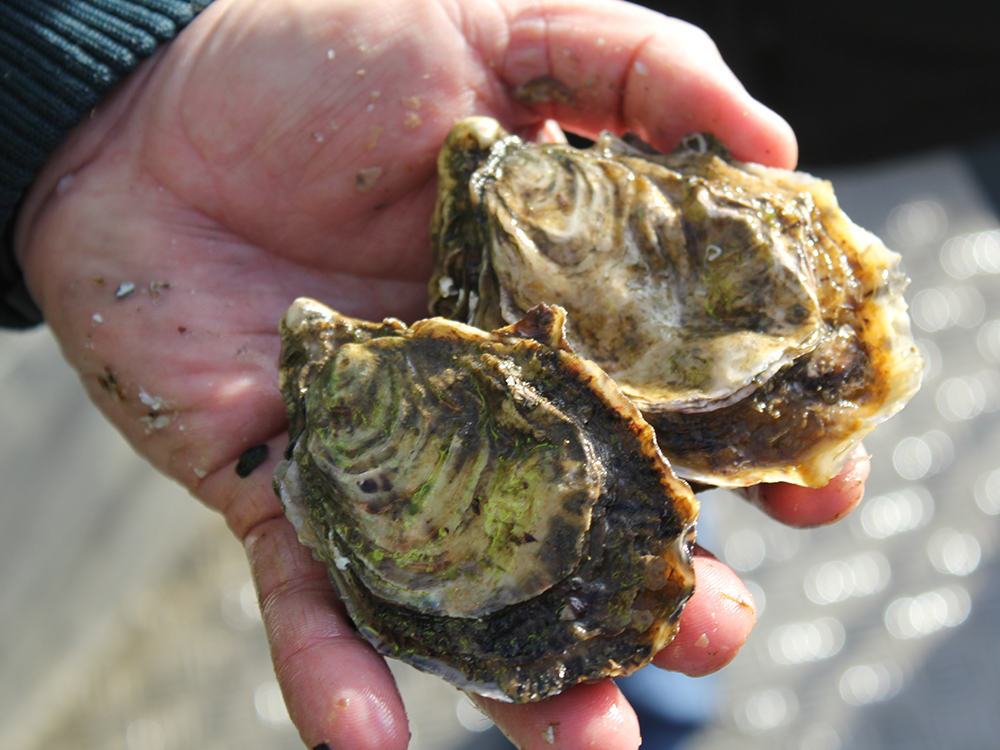Closing the life cycle of tuna in captivity is critical

Despite being one of the most consumed finfish species around the world, tuna is facing threats from information provided to consumers through the mass media and governmental advisory decisions in some countries. Besides the generic campaigns against the fishing industry regularly undertaken by environmentalist groups, tuna species face two major problems.
One regards concerns about methylmercury and human health. The other regards the sustainability of the tuna fishery. Safety and sustainability are two key concepts affecting consumers’ decisions on food, in general, and on seafood, in particular. Closing the cycle in tuna farming may reduce these issues, but will also bring new market challenges for the industry.
Methylmercury issues
Methylmercury is an organic form of mercury that can reach high levels in long-lived, predatory fish, such as tuna, sharks and swordfish. Pregnant and nursing women exposed to high levels of methylmercury may put their children at risk of neurological damage. Such adverse effects can also happen in young children with diets containing high levels of this organic form of mercury.
According to the Food and Agriculture Organization of the United Nations and the World Health Organization, the benefits of seafood consumption counterbalance the risks. But the topic of methylmercury in tuna has circulated across consumers, media and governmental institutions, which have issued recommendations on limiting consumption in populations under risk that may also have negative effects on other species and market segments.
In 1974, the United States Food and Drug Administration (FDA) set limits on the allowed amounts of mercury in fish, resulting in controversy across the industry. The issue of mercury in seafood was revitalized by the media during the first decade of the new century, and in 2004, FDA issued an advisory recommending some at-risk populations to avoid consumption of fish with higher mercury residues, including several tuna species.
Information effects
The impacts of these decisions and further negative information about mercury in tuna and other fish species on U.S. consumers’ preferences and purchasing behavior were studied by researchers Renee Hughner, Jill Maher, Nancy Childs and William Nganje in 2009, using samples of populations in and out of risk. They found that, in general, the expected benefits of fish consumption exceed the potential negative effects of harmful consequences in both groups. However, in the group at risk, knowledge of tuna’s harmful attributes negatively impacted purchasing behavior.
In a different context, with no official advisory on consumption of species with higher levels of methylmercury, Stéphan Marette, Jutta Roosen and Sandrine Blanchemanche undertook two methodologically different experiments in France in 2008 to test the impacts of health information on canned tuna purchase decisions.
Lab and field experiments were conducted using populations in risk as subjects. Results indicated a significant effect of the information provided regarding risks from methylmercury. After exposure to the information, participants’ willingness to pay for canned tuna decreased in both experiments.
Information about the harmful consequences of a diet high in methylmercury negatively affects consumption of tuna in those subpopulations of pregnant women or young children, but does not seem to affect the rest of the population. For a regular individual, consumption of tuna products is much more influenced by other factors, such as culture, tradition, education or frequency of seafood consumption.
However, as when the United Kingdom’s media warned about high levels of dioxins in farmed salmon, such alerts not only affect the consumption of the involved species, but all seafood in general. This is a matter of concern for the whole fishing industry.
Sustainability of tuna harvesting
The other important concern that may affect consumers’ perceptions of tuna products has to do with sustainability. These perceptions can be compromised by the status of overfishing for bluefin and other tuna species, and the externalities caused to other species by the purse seine fishery. As in the case of methylmercury, these sustainability issues have reached consumers through media, NGOs and governmental measures.
While the effects of the tuna fishery on other species, including mammals, are being progressively addressed by regulations, and these improvements have reached consumers through labeling schemes such as Dolphin Safe, overfishing of tuna stocks is still an issue for some consumer segments.
The status of the tuna stocks varies across species and fishing areas. Bluefin tuna is the endangered species most recognized by consumers and societies. Several groups and institutions point to tuna ranching as the main engine for bluefin tuna overfishing.
Market tools
Today, fisheries sustainability is a growing concern for consumers and institutions in developed countries. Ecolabels and red lists have been inserted into the market playground to drive consumers to certain certified-sustainable species and avoid those with greater environmental impacts. However, one can not expect consumers and retailers will act in an environmentally friendly fashion just by being aware of overfishing and other issues related to the tuna fishery.
Such behavior starts with consumer and retailer concerns, but will not result in willingness to behave sustainably without parallel personal and social factors. Such factors can result in different responses to sustainability issues across countries and markets.
Consumers in Japan, the most relevant market for bluefin tuna, are less aware of overfishing and the state of world fisheries than consumers in the U.S. Thus, the impact of ecolabels and other market-oriented tools regarding fisheries sustainability is much lower. Governmental measures, international agreements and other form of regulations have had more influence on the industry than any other action focused on consumers or public opinion.
Closing the cycle
Although bigeye or yellowfin tuna could be efficiently farmed, tuna ranching is today exclusively focused on bluefin species. Being capture-based, the growth ability of the industry is limited by dependency on a wild fishery identified as endangered and for which increasingly restrictive quotas have been imposed. These regulatory actions have limited the access of tuna farms to the fish needed for further fattening in captivity.
To overcome this limitation, closing the life cycle of tuna in captivity becomes critical. In recent years, great progress in this challenge points toward a tuna-farming industry encompassing hatchery to market that will be a fact sooner or later. The ability to control the full life cycle, including breeding, can decrease the presence of methylmercury in farmed tuna and also reduce the pressure on the wild stock. However, this new aquaculture activity will have to face other challenges common to other farmed fish markets.
Perspectives
The immediate consequences of the success in aquaculture production have more to do with economic dynamics than with consumers’ attitudes and opinions. Past experience with the main farmed fish species suggested that demand is sensitive to high prices.
One of the main challenges in aquaculture marketing is preventing prices from dropping faster than production costs. The level of industry fragmentation will be a critical factor in securing stability in prices. Further, consumers’ prejudices toward aquaculture in countries and markets with long-running traditions in seafood consumption, such as Japan or Spain, may also negatively affect prices.
(Editor’s Note: This article was originally published in the January/February 2015 print edition of the Global Aquaculture Advocate.)
Authors
-

José Fernández Polanco, Ph.D.
IDES, Universidad de Cantabria
Avenida de los Castros s/n E-3900
Santander, Cantabria, Spain[115,101,46,110,97,99,105,110,117,64,106,111,99,110,97,108,111,112]
-
Ignacio Llorente, Ph.D.
IDES, Universidad de Cantabria
Avenida de los Castros s/n E-3900
Santander, Cantabria, Spain
Tagged With
Related Posts

Innovation & Investment
Tuna aquaculture: Fishing for progress
Aquaculture could be a sustainable alternative to fishing for tuna but achieving commercial-scale production has proven challenging.

Innovation & Investment
Aquaculture Exchange: Daniel Benetti
University of Miami professor says the U.S. seafood marketplace needs to embrace 'plate-sized' fish if a domestic aquaculture industry is to become sustainable and profitable.

Intelligence
Behold the nutritious oyster
Oysters provide important, natural filtration of water and are an important component of many healthy coastal ecosystems because their active filtering can help improve and maintain water quality. For many coastal communities, oysters are an important food resource and excellent sources of protein and amino acids, zinc, selenium, iron and B-vitamins.

Intelligence
Boston brainstorm: Getting consumers to embrace aquaculture
In a discussion format somewhat unique to the bustling halls of Seafood Expo North America, aquaculture backers lamented the lackluster U.S. consumer acceptance for farmed fish.


